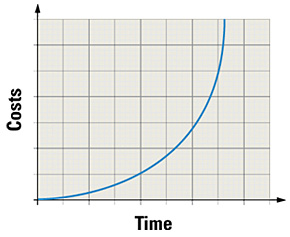
When load and performance testing are put off until the end of a development cycle, there is often little to no time for developers to make changes. This can cause teams to push back release dates and delay getting features out the door that customers need. If the performance problems are more fundamental, they could even require painful architectural changes that could take weeks or months to implement.

By including load and performance testing in continuous integration testing processes, companies can catch performance issues early before they get much more costly to fix. Developers can instantly know that the new feature in the latest build has caused the application to no longer meet Service Level Agreements (SLAs). They can fix the problem then and there before it becomes exponentially more expensive. This is especially true on Agile teams, when discovering a problem weeks later could mean that it actually occurred several builds ago which makes the task of pinpointing the root cause a nightmare.